Camper trailers are fantastic things. They allow us to travel further, for longer. With more comfort and huge amounts of storage you’d have to have rocks in your head to think they’re not one of the best ways to head bush. You’d need those same rocks in your head to think there are no negative side effects of hitching one to the back of your tow-tug, too. We accept they can increase fuel usage, so we fit long-range tanks and budget in the costs. We also accept the extra weight of the camper will hamper our performance on and off road, requiring more momentum in soft terrain, and strategic overtaking manoeuvres on the blacktop. The solution?
Well, after talking to the guys at Roo Systems, an electronic control unit (ECU) re-map and exhaust package would give our tow-tug Ford Ranger more usable power, quicker acceleration, stronger towing ability and maybe even save us a few bucks at the fuel pump. Sound too good to be true? We thought so too. But in typical Camper Trailer Australia style we were going to find out, and do it with a 3000km round trip hauling campers up and down the East Coast of Australia with more than a few dirt roads thrown into the mix. While the Ranger was strapped down on the dyno we wrangled in numbers man and gearhead Nick Sampson, the General Manager of Roo to pick his brain about what to look for, and what to avoid.
MORE POWER, MORE BETTER
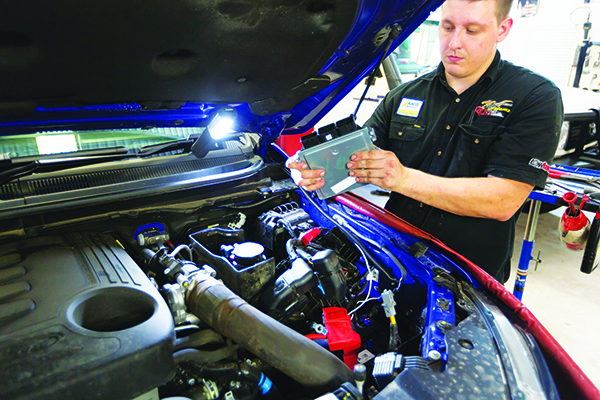


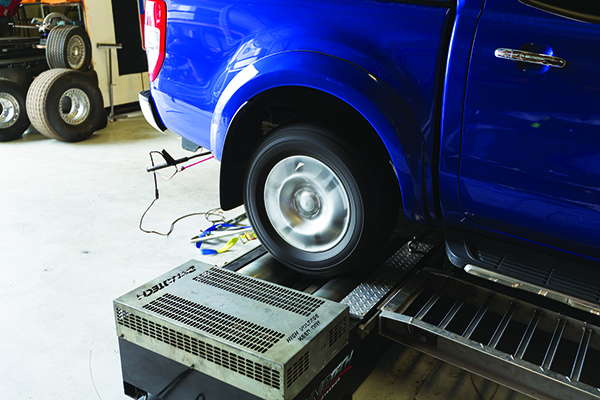
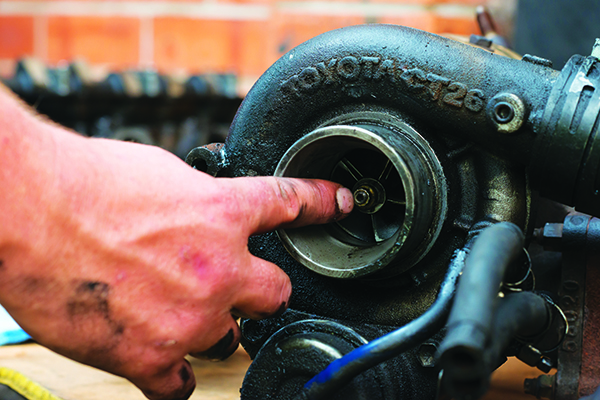

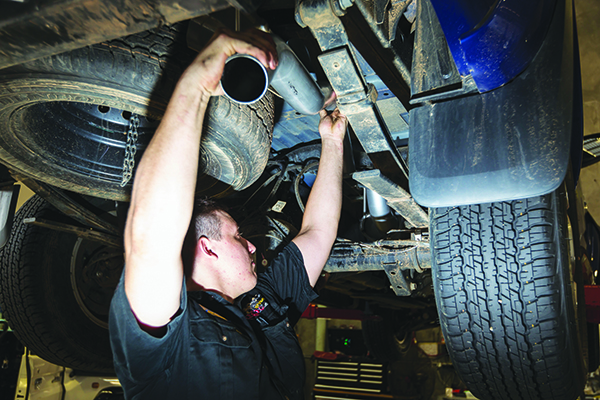
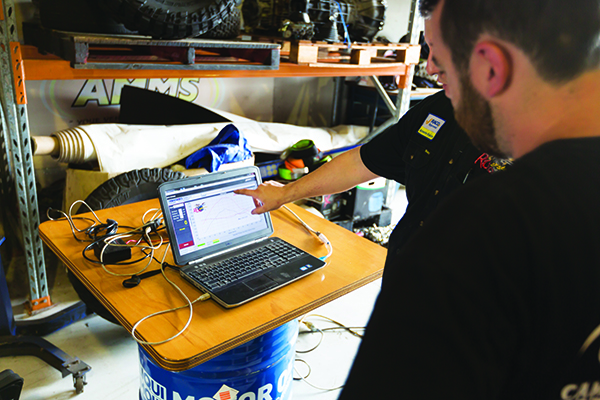
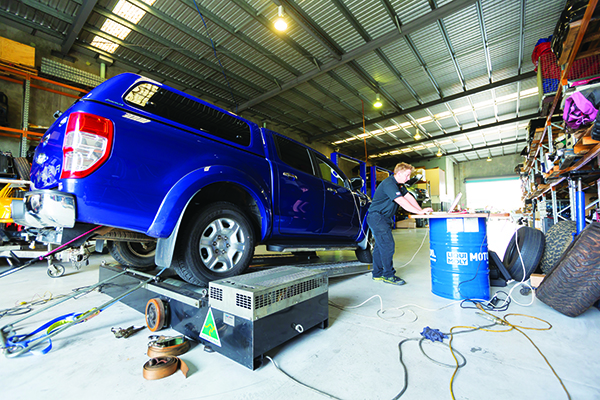
I can already hear the naysayers shouting from the roof tops, saying things like “If I wanted a fast car I’d buy one”, or “the factory makes them as fast and reliable as they need to be”. Heard them all before, but the reality is more power is almost always a good thing, especially when there’s a job to do. Toyota would agree with us there, too; it’s been punching out the HiLux for half a century, and it’s changed drastically over the years, but one constant is that every new model has more power than the previous. In some cases, that’s thanks to nothing more than a smarter engine control system, much like a re-map.
“The re-map allows you to get the benefits of what’s tied up in the engine,” Nick told us. “They keep it hidden away because they make a one-size-fits-all for the worst possible conditions in the world and don’t tune things to suit each market. We just take advantage of what the engine can already do.”
HOW DO THEY MAKE MORE POWER?
While Toyota can just decide it’d like more power in the next model and design a new engine accordingly, it’s a heck of a lot cheaper for us to simply get the most from our existing powerplants.
Diesel performance tuning has taken a few giant leaps over the years, but started at very humble beginnings. Old school, mechanically-injected diesels essentially ran like a clock. Push down on the throttle, the pump starts dumping fuel in and the engine sucks air in as it’s needed, and it’s all synced up with gears. Tuning basically came down to turning the fuel screw to pump in more and more fuel, until things were about to go bang. While it required a certain knack, they weren’t exactly complicated. Turbochargers or superchargers were often fitted, which could drastically boost how much air goes into the engine, allowing tuners to push even more fuel in, more fuel, but leaner air-fuel ratios. It’ll make sense later.
On the hunt for more power, manufacturers started replacing the mechanical connections with rudimentary ECUs and fitting turbochargers from factory. The ECU could pick up how hard the throttle was being pushed and control boost and fuel pressure to suit. Piggy-back performance chips were a simple solution for these and could alter the basic parameters like bumping up fuel pressure to get more fuel into the engine, or increasing boost pressure from the turbo. They did this by intercepting the signal the ECU was receiving and altering it, making the ECU think the fuel pressure was 10 per cent lower than it actually was so it’d bump pressure up 10 per cent extra to compensate.
As technology has evolved, the amount of control the ECU has over the engine has grown immensely. They’ll now pick up everything from the blade angle inside the turbocharger, to individual timing of each injector, how much pressure they run, how long they’re open for and when they open. There are literally hundreds of different variables the ECU will check against constantly, including a lot of safety parameters. Re-mapping is essentially updating the software with new parameters. In fact, it’s a lot like an update for your phone. By doing it this way they can make alterations without tricking the ECU into going past any of its inbuilt safety limits. The level of control also means the tuner has as much control over the engine as the factory does. Minor changes like bringing boost on slightly earlier, injecting fuel into the engine earlier, or changing the engine's timing itself are all tools available to the tuner to get the most from each engine.
PIECES OF THE PUZZLE
For diesel engines the actual tuning part is quite simple. The harder part is finding what limits the engine's performance from factory, and determining what can be modified, and what can’t. In almost all 4WDs the stock exhaust is not only low quality, it’s incredibly restrictive. So upgrading to a larger diameter and smoother flowing exhaust not only helps lower exhaust gas temperatures (EGTs), but allows the turbocharger to spin freer giving a more responsive throttle. From here the tuner will determine if the stock turbocharger can handle more boost (some are at their limits already), if the engine can handle more boost, if the injection system can handle more pressure, if the engine can handle more fuel and how aggressive they can get with the timing.
It’s this reason different engines require different upgrades depending on what power level you’re chasing and new tunes can take months to perfect before going on the market. Most workshops will offer basic packages that’ll increase performance without reaching existing limitations of factory components, then there are more extensive packages that will start upgrading those components if you’re chasing big numbers.
THE DEVIL IS IN THE DETAILS
While Facebook is full of horsepower heroes thumping their chests about how much power they’re making the actual numbers are irrelevant, and in many cases higher numbers can make a worse tow-tug. The most important aspect is reliability.
“There’s a common misconception that we just throw fuel at the engine,” says Nick. “In a diesel, you want leaner air-fuel ratios than in a petrol. Too much fuel can cause excessive heat and smoke, so the leaner the better. If they’re too rich the soot can clog up the diesel particulate filter too. Most cars go out the door through Roo with near stock or leaner AFRs than they come in with.”
The other thing people often gloss over is that the dyno readout is often more important than the peak numbers. In a 4WD, and especially in a tow-tug, the torque curve is far more important than the horsepower. A smooth torque curve starting high and slowly tapering off will provide linear power delivery making the engine feel much larger than it is. The flip side is that torque curves with sharp peaks or valleys will make for a twitchy throttle and jerky acceleration. The more torque down low, and the smoother the curve, the harder and longer the tow-tug will pull and the easier it’ll muscle around a camper. It’s the reason V8 'Cruisers are such good tow-vehicles despite having reasonably mild horsepower figures.
WHAT ABOUT MY WARRANTY?
When it comes to modifying any vehicle there are always two concerns that come up for people: where do I stand if things go wrong, and will it affect my new car warranty. The first is easier to answer than the second. A quality tuner will back their work and have systems in place to make things right if something goes wrong with your pride and joy due to their workmanship or product, so ask the question before plonking down your hard-earned cash.
Where things get muddy is dealers like knocking back warranty claims for anything, including stock 4WDs, if they can find a way to weasel out of it. The result is the dodgy dealers will often point the finger at any modifications including things like heavy duty suspension or aftermarket trailer brake controllers and claim it’s related to an unrelated failure.
“The owner of the vehicle needs to stand up for themselves,” Nick says. “The dealer needs to be very clear about what failed, why it failed and how our product caused it. If there’s a legitimate claim the owner can ring us and we’ll guide them through the process. If they’re unsure of what’s going on or where they stand they need to get in contact with us before making rash decisions.”
It ultimately comes down to accepting that many manufacturers don’t want to pay for warranty work and are hoping you’ll give up when they use lame excuses, rather than holding them to their guarantee.
WHAT'S IT LIKE TO DRIVE?
Not interested in the technobabble and just want to know the difference it’ll make to your 4WD? Well, in the spirit of some real world testing, the Ranger went under the knife (or keyboard) at Roo Systems for a ‘towing and touring’ tune and 3in DPF back exhaust system. The idea was more usable power while keeping things reliable, rather than becoming a horsepower hero.
The first burning issue – pun fully intended – is fuel economy. Before the work the Ranger would average around 9.7L/100km around town, and I live at the top of a mountain range, so it works for it. Surprisingly, economy gets slightly worse at freeway speeds, climbing up to 10L/100km. After the re-map the lowest I’ve seen it drop was 9.4L/100km, but it’s sitting on 9.6L/100km again and up to 10.1L/100km on the freeway. It can get better fuel consumption than before the tune, but it doesn’t, and that’s due to how it gets driven now compared to how it was driven before. Which brings us to our next point.
Before the modifications, the Ranger punched out 156hp and 350Nm at the rear wheels. Post tune and exhaust it’s up to 192hp and 470Nm at the rear wheels. The actual numbers are irrelevant, but it has a 23 per cent increase in horsepower and a 34 per cent increase in torque. The biggest factor is that the power is now available a lot lower in the rev range, making it feel a lot more powerful and responsive than the numbers would indicate. Rather than feeling high-strung like I was concerned it would, it instead feels like it’s grown in size, a larger engine doing the same job easier. Before the tune it’d have plenty of grunt when you were moving but would struggle to get up to speed to overtake on freeways, and you’d notice inclines whenever you had a trailer on the back. It is now seriously quick off the line, to the point if I put the boot in it’ll chirp the tyres and accelerate hard until I back off. It’s a lot more responsive at every speed making it easier to overtake slow vehicles and merge into traffic, but it also makes it significantly easier to tow a trailer.
I hate to draw similarities, but it now tows more like a V8 ’Cruiser. I need to look in the mirrors to actually notice the trailer, and running lights are a must at night. I often catch myself at freeway speeds needing to knock off a couple of kays because the Ranger now pulls the camper faster than I’m comfortable towing it. There’s no doubt in my mind it would do better on fuel if I drove it how I used to drive it, but having a big 4WD that’s able to pull ahead of traffic with a 2T trailer on the back is more important to me than half a litre in fuel savings.




